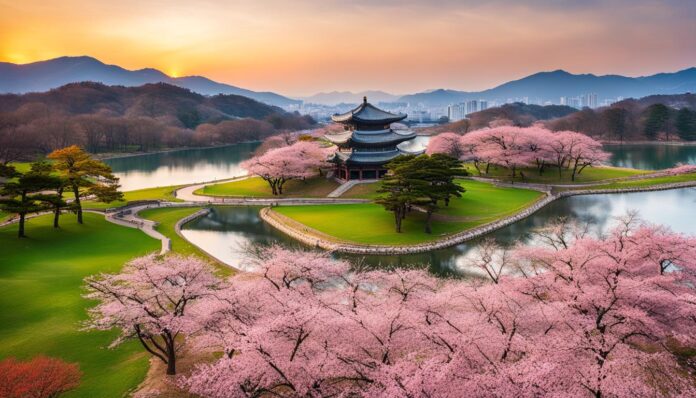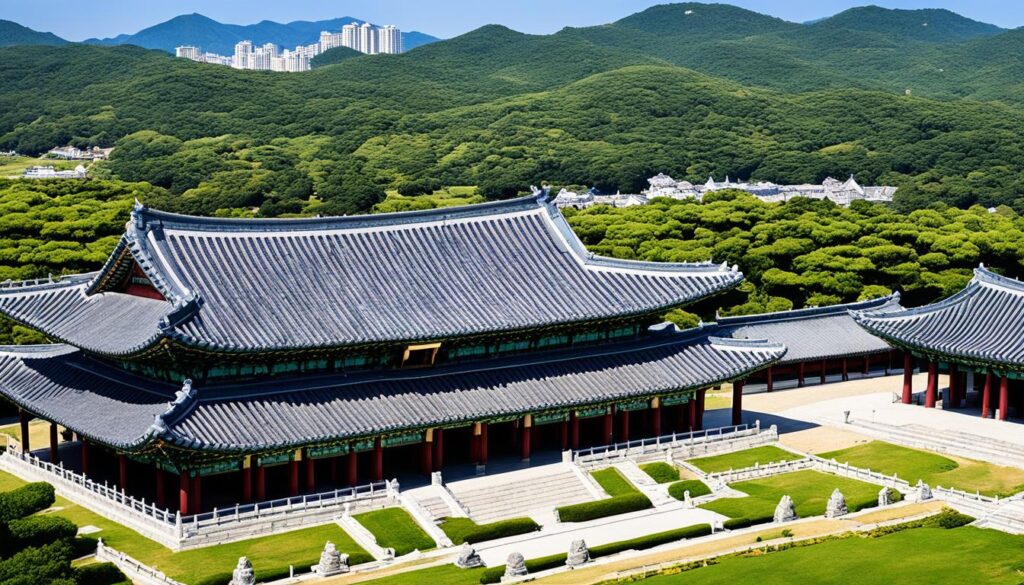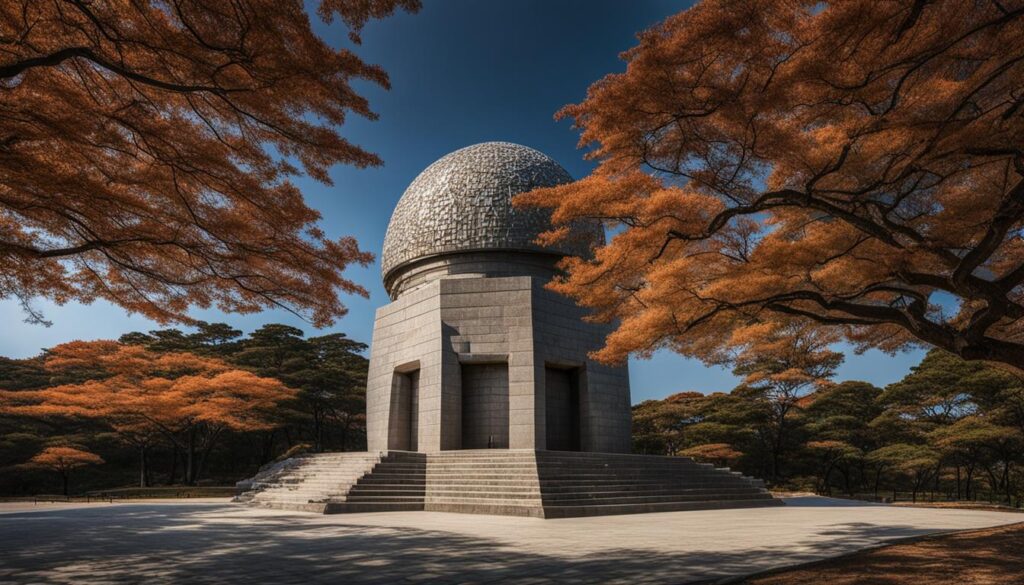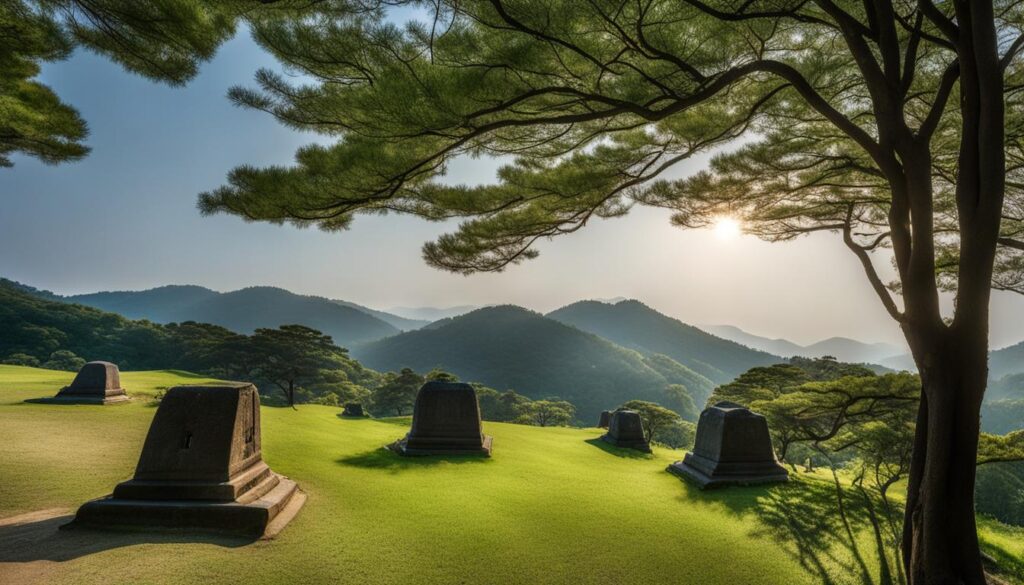Are you planning a trip to Gyeongju, South Korea, to visit the famous UNESCO World Heritage sites of Bulguksa Temple and Seokguram Grotto? While these must-see attractions draw millions of visitors each year, Gyeongju has much more to offer beyond these two cultural gems.
Discover the hidden treasures and lesser-known spots that make Gyeongju a fascinating destination for history and culture enthusiasts. From museums and observatories to temples and traditional villages, Gyeongju offers a unique travel experience beyond Bulguksa Temple and Seokguram Grotto.
Let’s take a look at some of the other top Gyeongju attractions that you won’t want to miss on your next trip to this captivating city.
Gyeongju National Museum
If you’re a history buff, you’ll definitely want to visit the Gyeongju National Museum, one of the most fascinating Gyeongju attractions. Here, you’ll discover a vast collection of historical and artistic objects related to the Silla Kingdom, including ancient ceramics, Buddhist relics, and royal treasures. Immerse yourself in the rich history of Gyeongju, which earned its status as a UNESCO world heritage site for its role as the capital of the ancient Silla Kingdom.
The museum’s collections are divided into several themed galleries, making it easy to navigate and understand the history presented here. Explore the Central Hall for an overview of Silla’s art and history, then visit the specialized galleries dedicated to gold artifacts and Buddhist relics. If you’re interested in ancient ceramics, don’t miss the spectacular Goryeo Celadon collection. Additionally, don’t forget to check out the outdoor display where you can enjoy the beautiful sculptures and architecture of the museum’s exterior.
Visiting Gyeongju National Museum
The museum is open from 9 am to 6 pm every day, except on Mondays when it is closed. The entrance fee is relatively affordable, around $3 per person. It is conveniently located in the city center and can be easily reached on foot or by public transportation. Note, however, that the museum forbids photography of any kind inside its galleries.
Cheomseongdae Observatory
Experience the oldest astronomical observatory in East Asia by visiting Cheomseongdae Observatory, one of the must-visit Gyeongju attractions. Marvel at the ancient structure that was used to observe the stars and learn about the Silla Kingdom’s interest in astronomy.
Built during the 7th century, the Cheomseongdae Observatory initially served as a calendar to determine the longest and shortest days of the year. However, its scientific purpose expanded, becoming an essential landmark in the history of Korean astronomy. The observation tower showcases 362 stones arranged in 27 levels, reflecting the 27 movements of the stars.
Take a beautiful snapshot of Cheomseongdae Observatory, and do not miss its beauty at nighttime. Take advantage of the guided stargazing tours available for visitors, providing fantastic opportunities to witness the stars’ brilliance in vivid detail at night.
When visiting the observatory, educate yourself on Korea’s historical and cultural past and acquire an in-depth understanding of the world’s oldest surviving astronomical observatory.
Make the most of your Gyeongju sightseeing by including Cheomseongdae Observatory as a destination. Witness the knowledge and technology of the Silla Dynasty’s era come alive by visiting this monument of historical significance.
Anapji Pond
Taking a leisurely stroll around Anapji Pond is a must-do when visiting Gyeongju attractions. This beautiful garden complex was once part of the Silla Kingdom palace grounds, and it offers visitors a glimpse into the grandeur of ancient Korean royalty.
Admire the tranquil pond, exquisite pavilions, and lush gardens that make up this picturesque site. You’ll feel transported back in time as you roam the paths and take in the stunning scenery. The pond itself is a marvel, with reflection pools, waterfalls, and strategically placed rock formations that all add to the beauty of the surroundings.
Be sure to visit at night when the garden is lit up, allowing for a particularly enchanting experience. As you explore the grounds, you’ll see why Anapji Pond remains a top attraction for visitors to Gyeongju and one of the city’s main claims to fame.
Daereungwon Tomb Complex
When visiting Gyeongju attractions, the Daereungwon Tomb Complex is a must-see. This vast park houses dozens of ancient tombs from the Silla Kingdom, providing a glimpse into the life and culture of this fascinating civilization. Walk among the tombs and explore the various burial mounds, including Cheonmachong, known for its elaborate murals and treasure-filled sarcophagus.
One of the most impressive tombs is the Heavenly Horse Tomb, which features a stunning statue of a horse and a treasure trove of royal artifacts. The site also has a museum displaying the excavated treasures found inside the tombs.
Exploring the Daereungwon Tomb Complex is a unique experience that offers visitors a window into the ancient history of South Korea. Learn about the traditions and customs of the Silla Kingdom and witness the many treasures that have been uncovered in these tombs over the centuries.
Bunhwangsa Temple
If you’re seeking a tranquil destination in Gyeongju, Bunhwangsa Temple is a must-visit attraction. This ancient Buddhist temple dates back to the 7th century and features beautiful architecture, including a pagoda and several halls. Admire the intricate details of the temple’s design, including the carved stone sculptures and vibrant paintings. Take a peaceful stroll around the temple grounds and experience the serene atmosphere that pervades the temple. The temple is also known for its cultural significance, having been listed as a National Treasure of South Korea.
Take a moment to appreciate the history and religious significance of this spiritual destination, which has stood the test of time, providing worshippers and visitors alike a glimpse into ancient Korean culture and beliefs. The surrounding countryside of Gyeongju offers an additional layer of serenity to visitors, making it a perfect destination for those who seek to rest and restore their mind and spirit.
Highlights of Bunhwangsa Temple
| Highlight | Description |
|---|---|
| Historic Architecture | Bunhwangsa Temple features stunning ancient Korean architecture, including a pagoda and multiple halls. |
| Stone Sculptures | Marvel at the intricate carved stone sculptures that adorn the temple’s exterior. |
| Cultural Significance | Experience the significance of the temple as a National Treasure of South Korea and a representation of ancient Korean culture and beliefs. |
Bunhwangsa Temple is a destination that offers a glimpse into the history and spirituality of South Korea. Whether you’re a history enthusiast, architecture lover, or simply seeking a peaceful destination, this cultural gem is sure to delight.
Yangdong Village
Step back in time and experience the beauty of traditional Korean culture at Yangdong Village. This charming village is one of the UNESCO World Heritage sites in Gyeongju and is renowned for its well-preserved hanok houses and stunning natural scenery.
As you stroll through the village, you’ll be transported to another era, where you can witness the simple and traditional way of life. Explore the cultural treasures of the region, including galleries, museums, traditional markets, and crafts shops.
While at Yangdong Village, visitors can participate in various traditional activities such as tea ceremonies, folk games, and performances. Don’t forget to try some of the local delicacies and traditional dishes in Yangdong Village.
Immerse yourself in the rich cultural heritage of the region, witness the beautiful architecture and unique way of life that makes Yangdong Village a must-visit destination in Gyeongju.
Bulguksa Temple: Dabotap and Seokgatap Pagodas
When visiting Gyeongju attractions, Bulguksa Temple is a must-see. This ancient temple is a masterpiece of Buddhist architecture and art, designated as a UNESCO World Heritage site. One of the temple’s most notable features is the Dabotap and Seokgatap Pagodas.
The Dabotap pagoda stands at 10.4 meters tall and has an intricately carved stone lantern at its pinnacle. This masterpiece of Buddhist art has been crafted with such precision that it stands without any fastening materials.
On the other hand, the Seokgatap pagoda symbolizes the Silla Kingdom’s grandeur with its undulating, multi-tiered structure. It stands 8.2 meters tall and is a depiction of the Great Enlightenment Stupa, which is a symbol of Buddha’s spiritual enlightenment and wisdom.
Marvel at the grandeur and beauty of the iconic Dabotap and Seokgatap Pagodas at Bulguksa Temple – the epitome of Buddhist art and architecture in South Korea.
Seokguram Grotto
Step into the world of ancient Buddhist art and architecture at the Seokguram Grotto, one of the top Gyeongju attractions. Located on Mount Toham and surrounded by lush greenery, this cave temple is home to magnificent stone sculptures and breathtaking panoramic views that will leave you in awe.
The temple was built in the 8th century and reflects the artistic prowess and ingenuity of the Silla Kingdom. The central Buddha statue at the temple is one of the most famous Buddhist sculptures in the world, with its serene expression, downcast eyes, and calm demeanor.
You can reach the Seokguram Grotto through a winding stone walkway that adds to the mystical and otherworldly vibe of the temple complex. Visitors often choose to visit the Grotto at sunrise or sunset to enjoy the stunning views of the sun painting the sky red and yellow over the mountains.
A trip to Gyeongju is not complete without experiencing the historic significance and natural beauty of the Seokguram Grotto, one of the most captivating Gyeongju attractions that will leave a lasting impression on you.
Korean Royal Tombs in Gyeongju
The Silla Kingdom, which ruled Korea for over a thousand years, built numerous burial mounds throughout the country that offer insight into the ancient culture and traditions of Korea. Gyeongju has many Korean royal tombs that are worth exploring.
These tombs, or “tumuli,” are mound-shaped structures made of soil, stone, and other materials. They are considered a testament to the rich royal legacy of the Silla Kingdom. The tombs vary in size, with some reaching up to 23 meters in height. Inside the tombs, you can find various treasures, including pottery, ironware, and gold artifacts.
A visit to the Daereungwon Tomb Complex is a must. This complex contains a collection of tombs from the Silla Kingdom, including the Cheonmachong Tomb, named after the painting of a galloping horse found inside of it. Inside this tomb, visitors can see the royal burial chamber and the various artifacts that were discovered inside.
Another tomb worth exploring is the Hwangnam Daechong Tomb. This tomb is known for its impressive size, with a diameter of over 22 meters. Inside, visitors can see a stone chamber and the artifacts that were found within the tomb, which include gold and silver ornaments, as well as swords and other weaponry.
Exploring the Korean royal tombs in Gyeongju is a unique cultural experience that offers a glimpse into the fascinating history of the Silla Kingdom.
Conclusion
If you’re looking for a unique travel experience, Gyeongju is a must-visit destination. This historical city has an array of attractions that go beyond the famous Bulguksa Temple and Seokguram Grotto. From the Gyeongju National Museum and Cheomseongdae Observatory to Anapji Pond and Daereungwon Tomb Complex, you will immerse yourself in Korean history and culture.
Take a leisurely stroll around the Bunhwangsa Temple, visit the well-preserved Yangdong Village, marvel at the Dabotap and Seokgatap pagodas, and explore the Seokguram Grotto. There are plenty of Gyeongju tourist spots to add to your itinerary, offering a unique sightseeing experience.
These Korean historical sites provide insights into ancient Korean culture and traditions that are worth exploring. Whether you’re a history buff or a culture enthusiast, Gyeongju has something for everyone.
So, add Gyeongju to your list and experience the beauty of this captivating city. Plan your itinerary around these Gyeongju attractions and have a memorable trip that you’ll cherish forever.















































